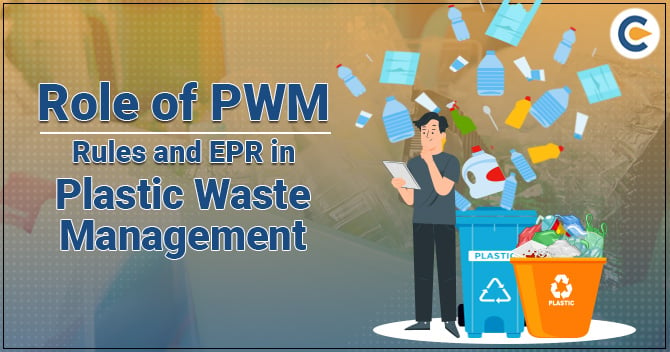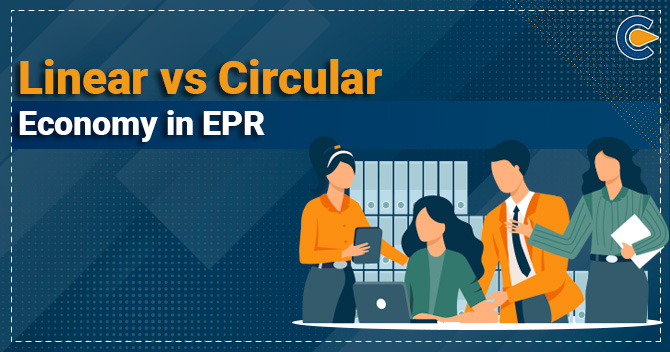The term EPR has gained a lot of popularity lately and has already become a buzzword. So what does it really means from the customer’s viewpoint? What significance does it hold with the EPR framework? This write-up seeks to underline the role of consumers in EPR.
Corporations & Industries emit waste every day in amounts that one could ever imagine. With so must quantum of plastic waste, the management of such waste ultimately lies on the shoulder of Municipal Corporation[1], communities, and state government. Therefore it becomes pivotal for the Indian Government to enact legislation and norms that will put the responsibility on the potential waste emitter/producers.
Extended Producer Responsibility refers to the policy-driven approach that puts physical and financial liability PIBOs (producers, importers and brand owners) and waste generators (those who convert waste into oil) to treat, reuse, recycle, and dispose of the post-customer plastic.
While holding producers liable for their wastes is groundbreaking in the policy approach towards establishing an efficient waste management system, we might not intend to overlook the significance of consumers in the EPR framework.
Responsibility of consumers in EPR
The end-users choices and conducts are pivotal to the process of EPR implementation in India. When end-users buy out products, they underpin a trend in the marketplace. This trend will ultimately decide if most items will end up in open-air/landfills or recycling units.
Therefore, it becomes vital that end-users are aware of their purchasing pattern & considerable carbon footprint. But what we as end-users can do to add value to the EPR framework and speed up the progress towards a circular economy? The section below discusses the same.
Favoring Mindful Consumerism
Every purchase end-users make is a moral conduct. What you buy out certain items, it will eventually end up back in the open air. Making a series of small conscious purchasing decisions and being watchful of the item’s durability may go a long way in the combat against plastic pollution.
The end-user has to be watchful of the ways they purchase products. Buying an item that is sustainable and recyclable should take priority. Before purchasing a product with packaging that might end up in an open-air, ask yourself if you require that product. Your decision to buy recyclable items can drive companies to rethink their business models and shift towards a circular economy. A brand undergoes a lot of pain and sweat to carve out a credible image among its end-users. Furthermore, an ideal business would be able to win the end-users trust and will eventually last longer.
Ensuring Segregation of waste at source
EPR is only productive if the waste is sorted at the source and disposed of aptly. Effective waste sorting implies more waste end up in apt waste streams and less waste is routed to open landfills.
The effort should be made to initiate waste segregation at home. Your office might have individual bins for wet and dry waste, and even your home should have some type of waste segregation.
The mixed waste is nothing but a burden to the system and compels municipalities to fetch more resources and money for proper Segregation.
Recycling and its apt disposal
There has been a steep rise in public protest against single-use plastic for apparent reasons. Single-use plastics cannot be recycled and are hard to dispose of. They ultimately find their way to open landfills and waste streams, causing a hazardous impact on territorial and aquatic life.
Averting such plastic and ascertaining your waste is pivotal to apt disposal. Recyclable plastic generally comes with a recycling symbol on the bottom. Therefore, end-users can make a wise decision and determine which plastic can be channelized to recyclers for disposal.
Common Pitfalls and Solutions to improper Waste Segregation and Disposal
Single used plastic is the main source of environmental pollution in India. The soaring plastic waste is causing considerable damage to human as well as aquatic life. To curtail this situation and ensure the nation’s transition towards a circular economy, the Government introduced the concept of the EPR and entrusted PIBOs with extended accountability for waste procurement and treatment. By far, the implementation of EPR is most of most significant step taken against the ever-rising waste in India.
With that being said, EPR implementation is still far away from widespread adoption as most entities deem it as a fiscal burden.
Furthermore, there are no provisions under prevailing legislation that hold customers accountable for waste handling. Most rules that mandate end-users to dispose of the waste come from local bodies aptly. This creates two upfront issues for the Government
- First, it won’t let them ensure comprehensive curbing of plastic waste
- Second, it slows down the nation’s transition towards the circular economy
Therefore, comprehensive fencing is the need for the hour for our nation. Unless Government opts to include customers under the EPR ambit, the problem of waste generation will continue to rise. The role of consumers in EPR is of paramount importance as far as the effective and extensive management of waste is a concerned.
Conclusion
It can be concluded that the role of consumers in EPR is not only important but a need for an hour for our nation. We need to be responsible for taking measures to protect our environment so that the coming generation can have a healthy lifestyle. EPR is a massive leap in this direction, and it can shift the nation toward a circular economy. The most pivotal thing is the role of consumers in EPR since they have the potential to make or break to brand.
Read our Article:E-Waste Dismantler Authorisation: How to get it?











